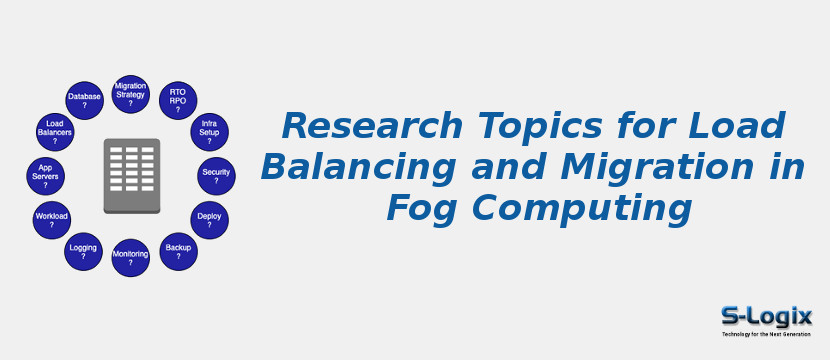Load Balancing in Fog Computing refers to the distribution of workloads across various fog nodes in a network to optimize resource utilization and ensure that no single node becomes overburdened.
Quality of service(Qos) factor efficient load balancing strategies are included to improve the fog network significantly. The aim is to balance the demands of multiple devices and applications connected to the fog network by directing traffic to different nodes based on various criteria, such as the computational capacity of the nodes, network bandwidth, and response time. Some of the load-balancing features in fog computing are listed below.
• Effectually distributes network load and client requests across multiple servers.
• Active nodes accept requests from end users and ensure huge availability and reliability through processing requests.
• Any server can be added to the network to provide server flexibility.
• Key metrics for load balancing in fog computing include:
• Scalability.
• Safety.
• Flexibility.
• Resource usage.
• Deadline.
• Processing time.
• Accuracy.
• Throughput.
• Availability.
Migration in Fog Computing describes transferring an application or data from one fog node to another, either within the same fog network or to a different fog network. Various factors, such as changes in network conditions, resource constraints, or the purpose of maintenance, can trigger migration.
The migration goal is to maintain system stability and availability and ensure that the fog network continues to provide low latency and high-quality services to connected devices and applications. Types of migration are as follows:
• Live Migration: Applications and data are transferred from one node to another without interruption in service to ensure that the fog network continues to provide services to connected devices and applications without disruption.
• Hybrid Migration: A combination of live and cold migration techniques is used to balance the advantages and disadvantages of both techniques to ensure that the fog network operates effectively and efficiently.
• Cold Migration: Applications and data are transferred from one node to another with an interruption in service to ensure that the fog network continues to operate effectively and efficiently.
Load Balancing:
• Increased Availability: Distributing workloads across multiple nodes, load balancing increases the availability of the fog network, reducing the likelihood of downtime in case of node failure.
• Improved Resource Utilization: Load balancing ensures that the available computational resources in the fog network are used optimally, reducing the likelihood of resource wastage.
• Better Performance: Directing traffic to nodes with available capacity and load balancing helps to reduce response time and improve the overall performance of the fog network.
• Enhances throughput, performance and resource utilization
• Optimal Scheduling
Migration :
• Improved Resource Management: Transferring applications and data to nodes with available resources and migration helps to ensure that the fog network operates efficiently and effectively.
• Increased Reliability: Migration helps to avoid resource constraints, ensuring that the fog network continues to provide stable and reliable services to connected devices and applications.
• Better Maintenance: Migration can transfer applications and data to nodes undergoing maintenance, ensuring that the fog network continues to provide services to connected devices and applications without disruption.
• Minimize response time, cost and power consumption
• Low latency
• High Mobility
Load Balancing:
• Scalability: Load balancing algorithms can be challenging to scale as the number of nodes in the fog network increases, which can limit the ability of the fog network to grow and support larger numbers of devices and applications.
• Overhead: Load balancing can introduce additional overhead, such as the cost of monitoring node utilization and directing traffic, which can impact the overall performance of the fog network.
Migration:
• Data Loss: There is a risk of data loss during migration, especially if the migration process is not properly managed, which can result in critical data loss.
• Interruptions: Migration can result in interruptions in service as applications and data are being transferred, which can impact the quality of services provided by the fog network.
Load Balancing:
• Dynamic Nature of Fog Network: The dynamic nature of fog networks, with devices and applications constantly joining and leaving the network, can make it difficult to maintain an effective load-balancing strategy.
• Heterogeneous Nodes: The presence of heterogeneous nodes, with different computational capacities and resource constraints, can make it challenging to determine the best load-balancing strategy.
• Real-Time Considerations: Load balancing algorithms need to consider real-time considerations, such as response time, to ensure that the fog network provides low-latency services to connected devices and applications.
Migration :
• Data Consistency: Data consistency during migration can be challenging, especially in large and dynamic fog networks, as data may be updated at different nodes simultaneously.
• Interoperability: Ensuring interoperability between different fog nodes, with different hardware and software configurations, can be challenging and impact the effectiveness of migration.
• Green Fog Computing: Research into the development of energy-efficient load balancing and migration algorithms, focusing on reducing energy consumption and carbon emissions in fog networks while ensuring the effective and efficient operation of the network.
• Distributed Migration: Research into the development of distributed migration algorithms that can effectively manage the transfer of applications and data between nodes in a fog network, taking into account issues such as data consistency and network latency.
• Real-Time Load Balancing: Study and develop a real-time load balancing algorithms that can effectively balance the workload of nodes in a fog network, taking into account real-time considerations such as response time and network latency.
• Fog-Edge Integration: Investigate the integration of fog and edge computing, focusing on developing load balancing and migration algorithms that can effectively balance the workload across the fog and edge tiers, ensuring the efficient and effective operation of the combined network.
